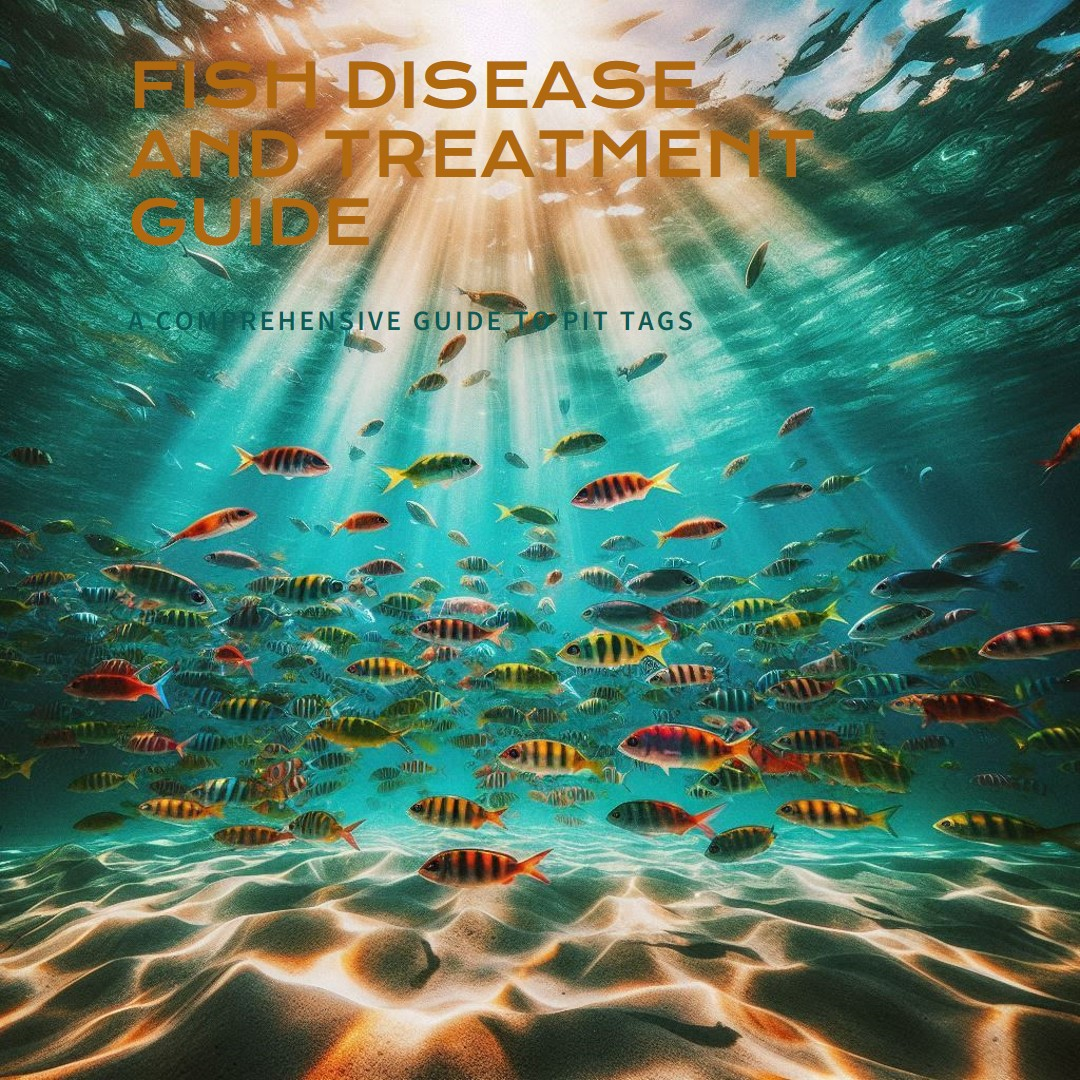In the ever-evolving world of marine biology and fish husbandry, PIT tags are transforming how we monitor fish populations and assess the impact of diseases and treatments. PIT (Passive Integrated Transponder) tags, which allow for the identification of individual fish, have traditionally been used in fish migration and behavioral studies. However, their application in studying fish diseases and treatments is gaining attention due to their potential to offer real-time insights and improve overall aquatic health management.
In this article, we’ll explore the role of PIT tags in monitoring fish health, the advantages they bring to disease research, and how they can aid in more targeted treatments. Additionally, we’ll mention the role of companies like Voda IQ in the development and refinement of Pit tags fish technology to enhance the accuracy and reliability of this method. Let’s dive deeper into how PIT tags can be pivotal in studying fish diseases and treatments.
Understanding PIT Tags and Their Function
Pit tags fish are small, radio-frequency identification (RFID) devices that are implanted under the skin of fish, usually without causing significant stress or harm. These tags are passive, meaning they don’t have a power source; instead, they are activated by an external reader, allowing researchers to collect unique identification data from individual fish.
When used in the context of disease research, PIT tags allow researchers to:
- Track the progression of diseases over time.
- Monitor how different environmental conditions impact the health of specific fish.
- Assess the effectiveness of various treatments by observing tagged fish in real-world conditions.
The data collected from PIT-tagged fish can be vital in understanding how diseases spread and how treatments can be tailored to mitigate the risks to both wild and farmed fish populations.
PIT Tags in Disease Monitoring
The use of PIT tags in fish disease studies is particularly beneficial because of their ability to provide long-term data. In natural environments, fish are exposed to various stressors, pathogens, and conditions that might not be fully replicated in laboratory settings. PIT tags allow scientists to continuously monitor the health of fish in their natural habitats or in aquaculture environments, enabling a more accurate representation of disease progression and treatment outcomes.
For example, diseases like ichthyophthirius multifiliis (commonly known as ich) in freshwater fish or infectious salmon anemia in marine species have been studied using PIT tags. These tags help researchers trace the movement and behavior of infected fish, giving insights into how these diseases spread through populations.
The continuous data feed from Pit tags fish also allows for the tracking of physical symptoms such as lesions, weight loss, or abnormal swimming patterns. When these signs are detected in PIT-tagged fish, researchers can correlate them with potential disease outbreaks and take appropriate action.
Enhancing Treatment Effectiveness
One of the key areas where PIT tags shine is in the testing and evaluation of treatment methods. By tagging fish with known diseases and subjecting them to various treatment regimens, scientists can gather detailed information on which treatments yield the best results. Since each fish carries a unique identifier, researchers can follow up on individual responses to treatments in both controlled and wild environments.
This individualized tracking means treatments can be adjusted more precisely based on the specific needs of different fish populations. For instance, a treatment that works well for one group of fish might not be as effective for another, depending on factors such as age, species, or environmental conditions. PIT tags enable researchers to fine-tune these treatments and gather data to optimize health outcomes.
Furthermore, the use of Pit tags fish in aquaculture facilities allows for efficient disease management. Fish farmers can easily track the progress of treated fish, monitor recovery rates, and adjust water quality, feed, or medication regimens based on the real-time health status of their fish populations.
Real-World Applications and Success Stories
Several studies have successfully demonstrated the utility of PIT tags in monitoring fish diseases and treatments. For instance, researchers in salmon farming have utilized PIT tags to track and treat outbreaks of sea lice. By closely monitoring the movement and behavior of infected fish, they were able to apply targeted treatments that significantly reduced the impact of these parasites.
Similarly, a study on rainbow trout infected with bacterial gill disease showed that PIT tags allowed for detailed tracking of individual fish health. Researchers could correlate changes in environmental factors, such as water temperature and quality, with disease severity and recovery rates, providing crucial data for improving disease management strategies.
Companies like Voda IQ are at the forefront of developing advanced PIT tag technology that offers improved accuracy, durability, and data collection capabilities. By providing cutting-edge tools to researchers and fish farmers, Voda IQ is helping revolutionize how diseases are studied and treated in both wild and farmed fish populations.
Limitations and Considerations
While PIT tags offer significant advantages, there are some limitations to their use in disease studies. For instance, the size of the fish matters, as smaller species might not be able to carry a PIT tag without experiencing stress. Additionally, the initial cost of PIT tags and readers can be high, making it a less feasible option for smaller research facilities or farms.
Moreover, Pit tags fish do not directly monitor health metrics such as body temperature or blood chemistry, so they often need to be used in conjunction with other diagnostic tools for a comprehensive understanding of fish health.
However, as technology advances and costs decrease, the potential of PIT tags in disease monitoring and treatment optimization is expected to grow, making them an increasingly valuable tool in the field of marine biology and aquaculture.
Conclusion
PIT tags have emerged as a powerful tool in studying fish diseases and treatments, providing invaluable data that helps scientists and aquaculture professionals improve fish health management. By enabling long-term tracking of individual fish, PIT tags facilitate more precise disease monitoring and treatment applications, ultimately contributing to healthier fish populations and more sustainable aquaculture practices.
As technology continues to evolve, companies like Voda IQ are enhancing the reliability and accessibility of PIT tag systems, paving the way for even greater advancements in fish disease research.
FAQs
1. How do PIT tags compare to other tracking methods in fish disease research?
PIT tags offer long-term, individualized tracking, which makes them particularly useful for disease monitoring and treatment evaluation. Unlike other methods such as acoustic or satellite tagging, Pit tags fish are smaller, less invasive, and offer detailed data on individual fish.
2. Are PIT tags harmful to fish?
PIT tags are generally considered safe and cause minimal harm to fish when properly implanted. The small size of the tags and the non-invasive nature of their operation make them suitable for long-term monitoring.
3. Can PIT tags be used in small fish species?
PIT tags are best suited for larger fish due to the size of the tag. For smaller species, alternative tracking methods may need to be considered to avoid stress or injury to the fish.
4. How do PIT tags help in disease treatment in aquaculture?
PIT tags allow aquaculture professionals to monitor individual fish responses to treatments in real-time. This enables more effective disease management by allowing targeted treatment adjustments based on the specific needs of each fish.
5. What are the costs associated with using Pit tags fish in disease research?
The cost of PIT tagging includes the price of the tags, readers, and implantation equipment. While initial costs can be high, the long-term benefits of accurate disease monitoring and treatment optimization can outweigh these expenses.
Also know about




